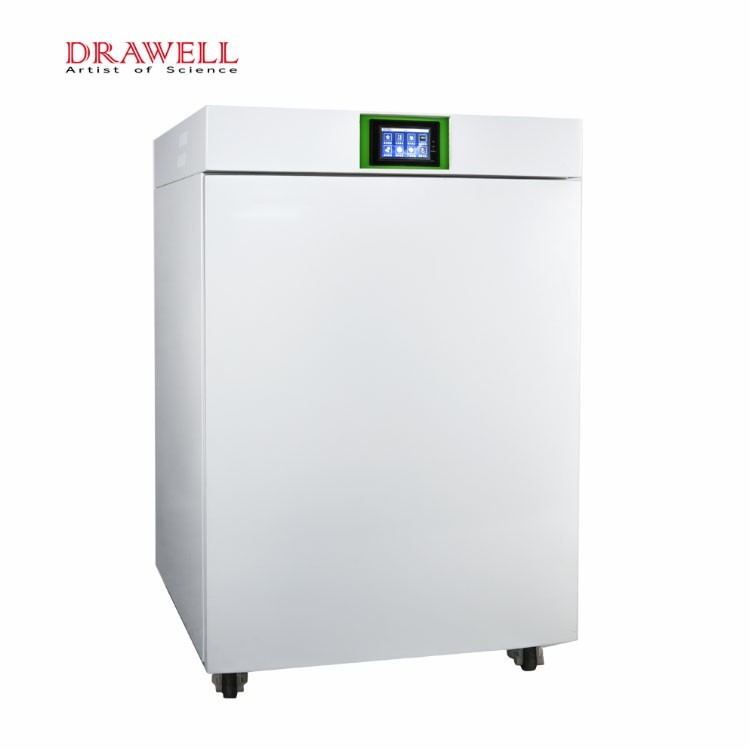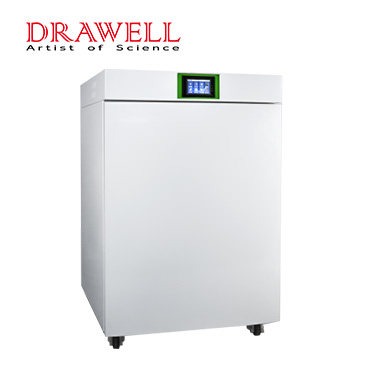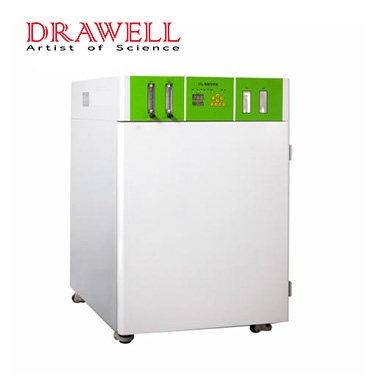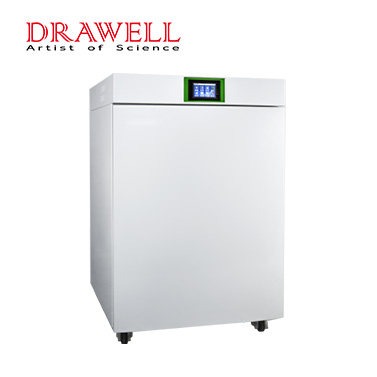This article includes two tips about CO2 incubators. The first tip is how to clean the CO2 incubator. The second tip is how to sterilize the CO2 incubator.
How to Clean the CO2 Incubator?
Cleaning refers to the removal of dust, dirt, and organic stains. Cleaning methods include brushing, blotting, dry wiping, washing, or mopping with a damp cloth soaked in soapy water or detergent. Dust, dirt, and organic matter are habitats for microorganisms and can interfere with the action of decontamination agents such as antibacterials, chemical germicides, and disinfectants.
CO2 incubators must be cleaned to achieve disinfection and sterilization purposes, and many fungicides only have bactericidal activity on cleaned items. Cleaning and disinfection must be carried out with reagents that are chemically compatible with the disinfectant or sanitizer to be used later.
① Clean the surface of the CO2 incubator: first, brush off the dust on the surface, then clean it with a wet sponge or soft cloth and then dry it with a soft cloth. If there is dirt, wash with a low-concentration detergent, then wipe dry.
② Clean the inside of the box: choose a suitable disinfectant. All objects and surfaces must be cleaned, rinsed with sterile water, and then wiped or air-dried.

How to Sterilize the CO2 Incubator?
CO2 incubator is a device that simulates the growth environment of cells, tissues, and microorganisms. In the cultivation process, in addition to the precise and stable control of temperature, CO2 concentration, humidity, and other indicators, disinfection and sterilization are also important ways to ensure the cultivation effect.
Disinfection refers to physical or chemical means of killing microorganisms, but not necessarily their spores. Sterilization refers to killing all organisms. Sterilization measures are required when the cells in the carbon dioxide incubator are contaminated. Generally, when the cells in the carbon dioxide incubator are not infected, they are thoroughly sterilized once every 1-3 months. The three most commonly used disinfection and sterilization methods are liquid disinfectants, Ultraviolet disinfection, and Dry heat sterilization.
① Liquid disinfectant: Choose a liquid disinfectant that is non-corrosive to the carbon dioxide incubator, and the disinfection effect of the liquid disinfectant is related to many factors. For example, there are factors like site temperature, contact time, pH, penetration ability, and the reaction of organic matter. Small changes in some of these factors can make a big difference in the effectiveness of a detergent. Therefore, even in very advantageous cases, when sterility is ultimately required, liquid detergents are not completely reliable decontamination methods.
②Ultraviolet disinfection: Generally, after cleaning with distilled water, it is irradiated with the ultraviolet lamp that comes with the incubator for a day. When the UV lamp is irradiated with a hood, the number of times the UV is irradiated to the cavity is very small.
③ Dry heat sterilization: Dry heat sterilization can be used as an additional means to clean the room when the CO2 incubator is used for contamination-hazardous areas. Dry heat sterilization uses 6-sided direct heating up to 120°C. This enables the cavity to destroy bacteria. High temperature (120°C) in the incubator for more than 2 hours. After an 8-hour sterilization program (including a 2-3 hour warm-up time, depending on the temperature), the temperature in the sterilization chamber is lowered and returned to 37°C or the temperature set in the previous program.

During the use of CO2 incubators, special attention should be paid to the method of disinfection and sterilization to ensure that the CO2 incubators have a safe culture environment. However, choosing a CO2 incubator with a suitable disinfection function and timely and regularly using appropriate methods for disinfection and sterilization. The continuous control of pollution can provide a superior cultural environment.




